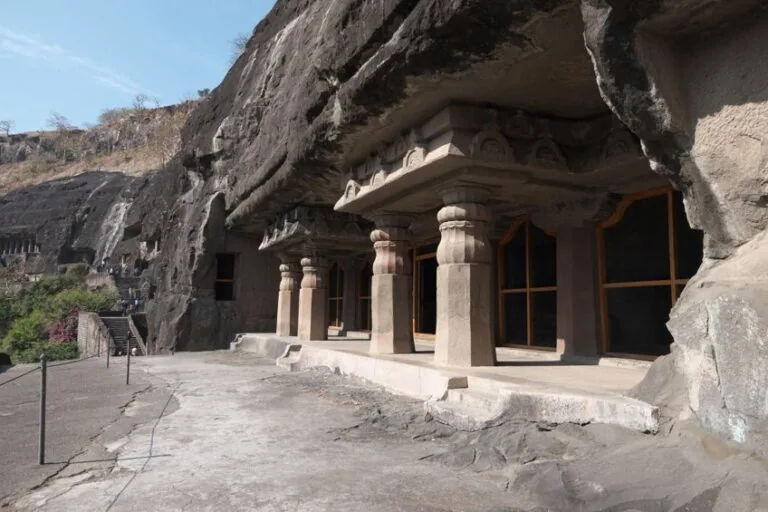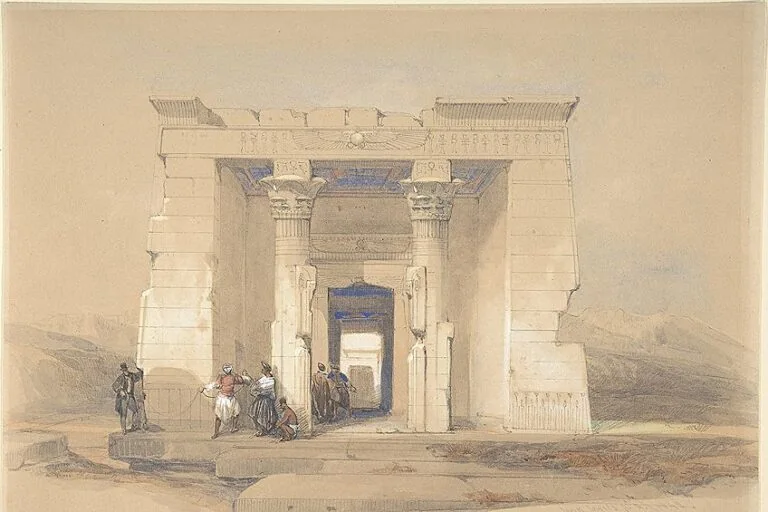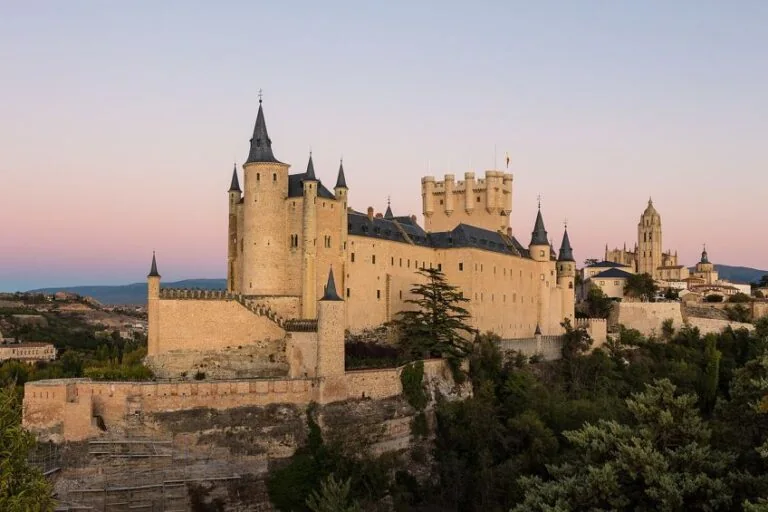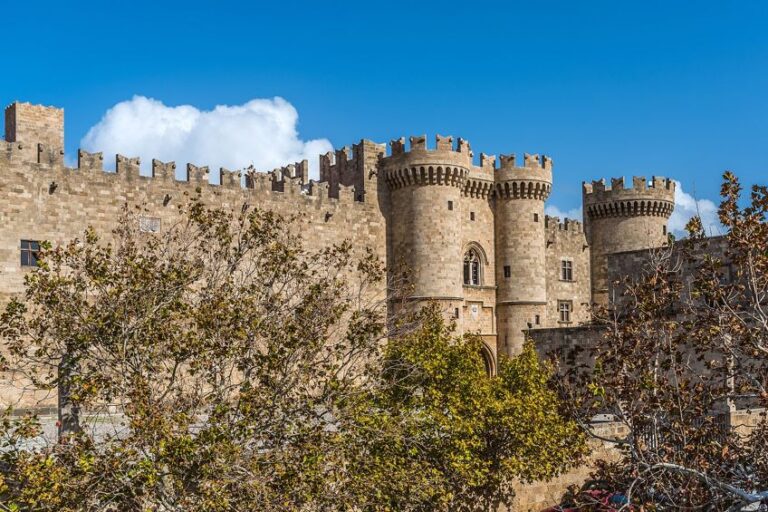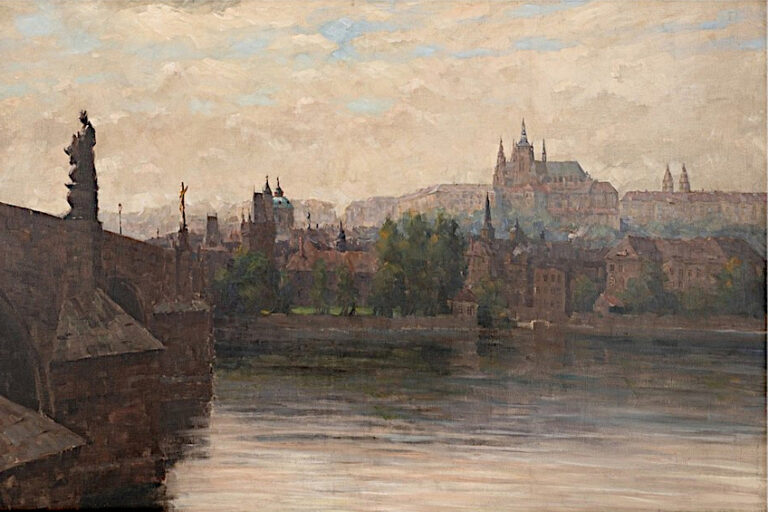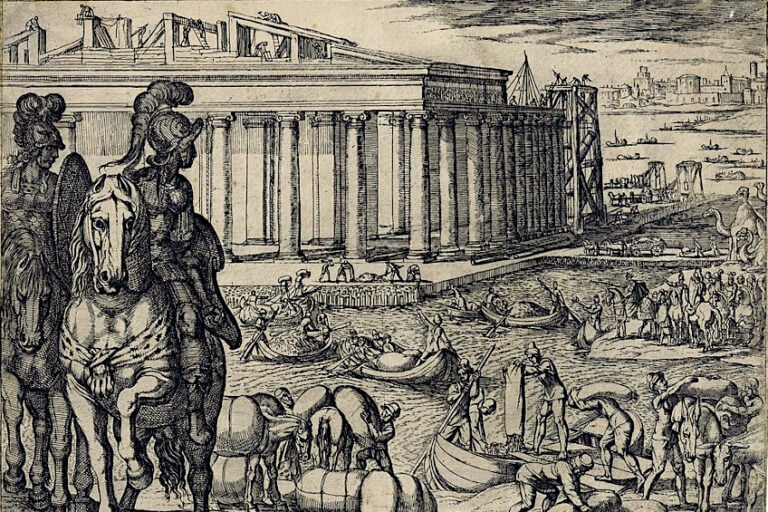Pitti Palace in Florence – Explore the History of the Palazzo Pitti
There are plenty of things to see in Italy, but it’s pretty easy to get stuck into one of the many tourist trap destinations. Rather than going to see the Leaning Tower or one of the many ancient statues on display, why not go ahead and check out some of the ancient architecture instead? One of the coolest and most historic locations you can visit is the Pitti Palace in Florence. This location has seen royalty, jewels, gold, war, revolution, and some of the best art ever created. This being said, let’s have a look at exactly what the Pitti Palace is, why it was made, who created it, what is contained inside of it, and what exactly makes it so special. Without further ado, here’s everything you need to know about the Pitti Palace, and some lesser-known facts too!
Contents
What Is the Pitti Palace?
| Architect | Luca Fancelli (commissioned by Luca Pitti) |
| Dimensions (m sq) | 32,000 |
| Date of creation | 1458 CE |
| Location | South side of the River Arno, Florence, Italy |
| Architectural style | Renaissance |
The Pitti Palace in Florence is one of the most historically and culturally significant locations on the face of the planet. This isn’t just for the people of Italy either, but for the rest of the world as well. The Palace is located south of the River Arno, and it is one of the many stunning locations along the banks of said river. Also known as the Palazzo Pitti, it was designed all the way back in 148, this palace was the residence of a famous banker of the time called Luca Pitti (hence the name Pitti Palace). The overall style and shape of the palace are very obviously renaissance, but additions to the structure in later years show that there have been other architectural influences as time went on.
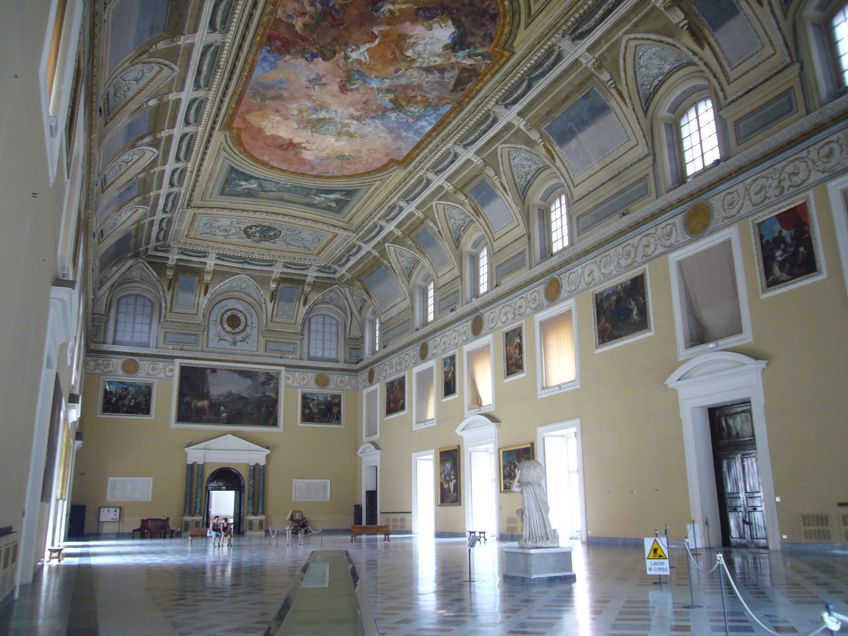 Sala Meridiana in the Palazzo Pitti (1813); Lalupa, CC BY-SA 4.0, via Wikimedia Commons
Sala Meridiana in the Palazzo Pitti (1813); Lalupa, CC BY-SA 4.0, via Wikimedia Commons
One of the most famous names to ever take up residence in the palace would have to be the Medici family of Florence. This family has close ties to many famous Italian figures of the renaissance era, even ones as prestigious and well-known as Leonardo Davinci. The residence was often a recipient of incredible gifts and artworks, some of which still reside there today.
It would later become home to the Grand Duchy of Tuscany, and many other wealthy and politically influential families of the time. As time went on and great clans rose and fell, the palace changed hands, and in the 1700s was even home to the now famous Napoleon Bonaparte who used it as a base of operations. Later on, in its life, the Pitti Palace in Florence was dubbed the principal royal palace of Italy upon the unification of the region, but as we know today this is no longer the case.
It is unsurprising that the palace would be used for such grand purposes considering its size, and the fact that it has a rich history of being home to such notable families and figures.
Today, the palace is a tourist destination and museum, a far cry from its intended purpose, but it still remains quite the site to see. It is actually the largest museum complex in the whole of Italy, a title that it received in the early 20th century after the property was donated to the people of Florence by then King Victor Emmanuel the 3rd.
The History of the Pitti Palace
The history of the Pitti palace is a long one, with it changing hands a number of times after its creation, and with each owner adding their own flare to even entire wings to the structure. As we mentioned previously it was commissioned by a famous banker of the time Luca Pitti, who was actually really close friends with its eventual owner Cosimo de’ Medici.
There are loads of rumors and stories surrounding the design and construction of various elements of the palace.
Some of them allude to a request that the windows of the palace should be larger than the doors, and others hint that an architect named Filippo Brunelleschi designed the structure, even though it is widely accepted that Lucca Fancelli created and supervised its construction.
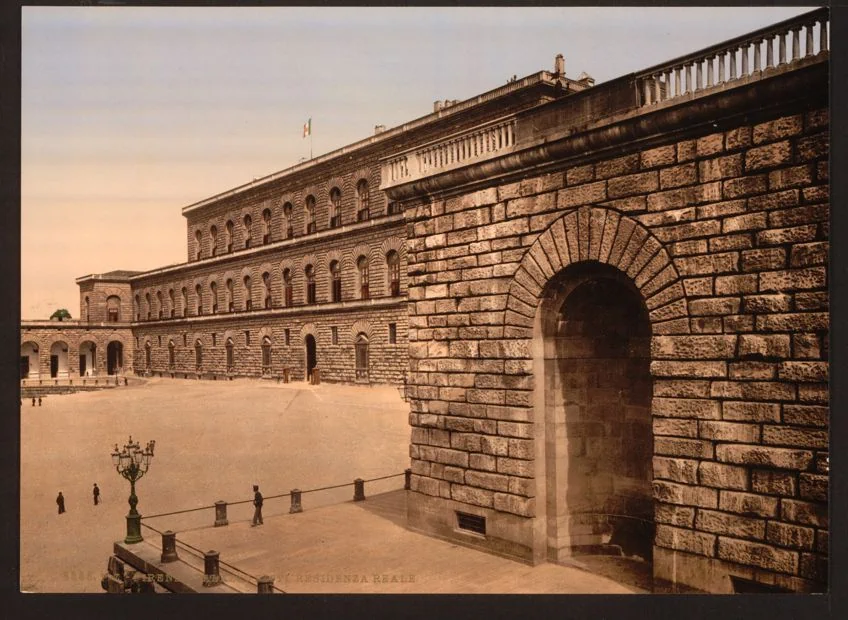 Pitti Palace, Royal Residence (1458); Photochrom Print Collection, Public domain, via Wikimedia Commons
Pitti Palace, Royal Residence (1458); Photochrom Print Collection, Public domain, via Wikimedia Commons
As for the style of the building, it is also widely accepted that the style is predominantly classical renaissance. Although, there are elements of the core design that go against some of the more traditional elements of renaissance architecture. This being said, the repeating sequence of pillars and archways, as well as the style of brick used for the exterior walls.
The design of the building can tell you a lot about the person who created it too. It seems that the person who created it led more toward practicality than art and expression. This is typical of more modern architecture due to our love of efficiency and a greater understanding of both materials and engineering principles. In fact, there are aspects of the building that resemble that of a roman aqueduct more than that of a palace fit for royalty. This is evident in the presence of repeating archways that have become synonymous with the now-famous aqueducts of Rome.
Architectural influences and nods to other great artists were common at the time, so this comes as no surprise considering Florence’s proximity to Rome.
The Medici Family History
One of the most reputable clans to occupy the Palazzo Pitti has to be the Medici family. Their interest in and eventual occupation of the palace comes as no surprise considering that they were very close with the person who commissioned it, Lucca Pitti.
Cosimo De’ Medici was a good friend of Pitti’, and purchased the property from his friend on behalf of his wife when it went up for sale in the year 1549.
In case you were wondering, the Medici family were bankers for generations, and Cosimo was actually the Grand Duke of Tuscany around the time he purchased the palace. As anyone does when they purchase a new home, Cosimo looked to make it his own, and he did by adding more than double the palace’s original mass to the structure in the form of extensions.
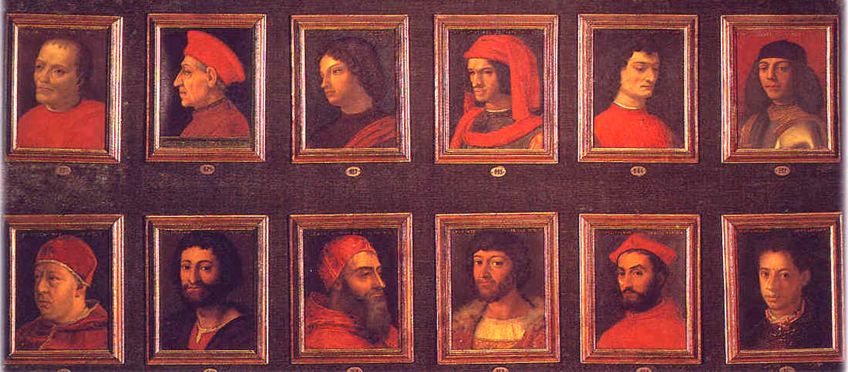 Serie of the famous members of the court of the Medici (c 1555-16650) by the workshop of Bronzino; Workshop of Bronzino, Public domain, via Wikimedia Commons
Serie of the famous members of the court of the Medici (c 1555-16650) by the workshop of Bronzino; Workshop of Bronzino, Public domain, via Wikimedia Commons
Excessive? Maybe. Did it look cool and make his wife all the happier? Absolutely! The renovations to the palace didn’t stop there though, as Cosimo built the now-famous Vasari Corridor, an outdoor walkway that connected the Palazzo Vecchio with the Pitti palace on the South side of the structure. This was done so that the family could safely transit from their personal residence to the Pitti Palace if need be.
The Medici family didn’t use the Pitti Palace even after extensive renovations and extensions had been made to the palace. Instead, the Medici family would use the Pitti Palace as lodging for people of importance, or if there were functions held by house officials that required a large space or accommodation for a large number of people. This being said, the official residence of the Medici family remained the Palazzo Vecchio for the foreseeable future until the ascension of Cosimo and Elenora’s son Francesco to the head of the house.
At this point, Francesco and his family made the Pitti Palace their permanent residence and moved all of their family’s various artworks to this location.
The Boboli Gardens
| Architect | Niccolò Tribolo and Bartolommeo Ammanati |
| Date of Creation | 1766 (open to the public) |
| Dimensions (A) | 111 |
| Location | Florence, Italy |
| Architectural Style | Renaissance amphitheater |
The expansion and renovations of the Palazzo Pitti did not end there though. After moving into the palace and making it their permanent home, Francesco de’ Medici sought to add something to the palace other than architecture, and quite brilliantly pivoted to landscaping instead. As a result, a living garden and courtyard were built in Francesco’s order.
In order to create this garden a hill near the palace was purchased and subsequently prepared for the process. The hill was originally known as the Boboli hill, and as a result, the garden that was erected on it came to be known as the Boboli Garden, a name which it still holds today. The total size of the Boboli Garden is a staggering 111 acres!
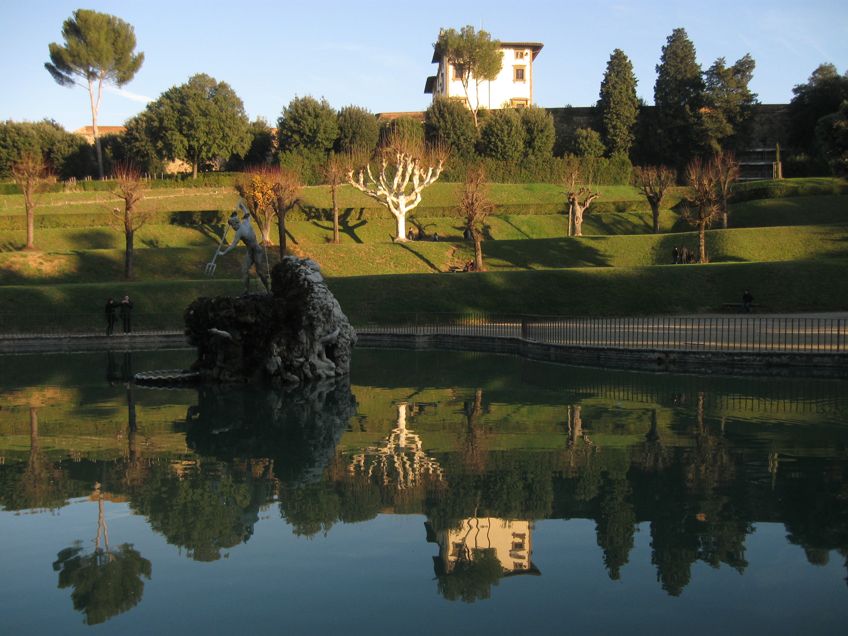 Fountain of Neptune in the Boboli Garden (1766); Carlo V. Mori, CC BY 3.0, via Wikimedia Commons
Fountain of Neptune in the Boboli Garden (1766); Carlo V. Mori, CC BY 3.0, via Wikimedia Commons
Since the renaissance was the age of experimentation, artwork, and performance, it makes sense that the newly constructed garden was built in the shape of an outdoor amphitheater. The newly formed theatre held its first performance before it was ever open to the public (all the way back in 1476), and featured a performance of Adria by Terrance.
For the most part, though, the garden would be used almost exclusively for private plays put on for the entertainment of the Medici family and their friends. Many plays are noted to have been performed there, most of them the product of native playwrights, the most notable of which has to be one Giovan Battista Cini. These weren’t your schoolyard productions either. Most of the plays included talented actors and meticulous directors who both took their craft extremely seriously.
After all, it was considered an honor to perform for such a renowned family, so great care was taken in terms of the costume and set design, the latter of which is noted to have been done by the court architect himself!
The Courtyard of the Pitti Palace
When you have more money than most people would know what to do within their entire lifetimes, why would you stop at creating your own personal amphitheater? The Medici’s continued to extend the size of the palace grounds by creating an entire courtyard of what many consider to be the most influential architectural styles ever imagined right next door to it.
What does this courtyard look like you ask? Well, aside from being massive in size, the style of the courtyard is described as being a “channeled rustication”, a form and style that would be reproduced the world over following its construction. The courtyard itself features a number of large archways around its perimeter that have come to be known as leaning windows through the architect and are quite the sight to behold.
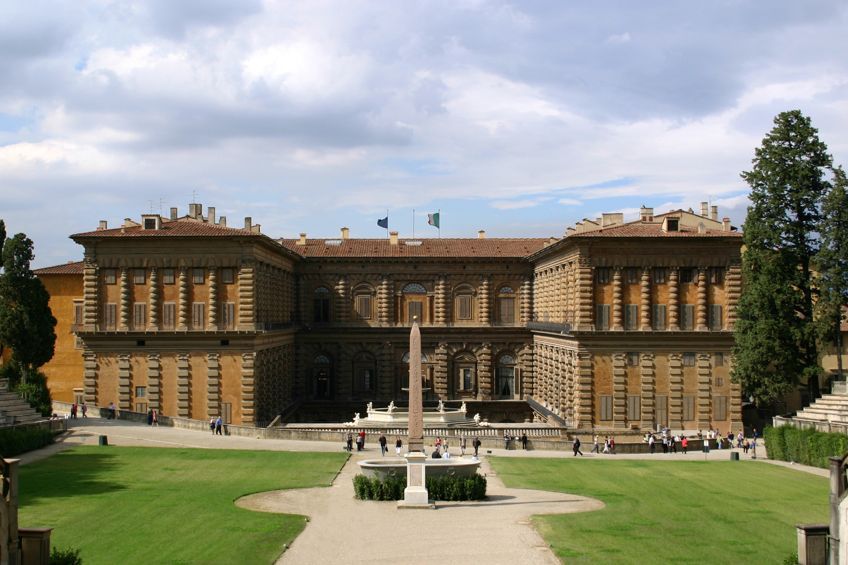 Pitti Palace, Royal Residence (1458); Stefan Bauer, http://www.ferras.at, CC BY-SA 2.5, via Wikimedia Commons
Pitti Palace, Royal Residence (1458); Stefan Bauer, http://www.ferras.at, CC BY-SA 2.5, via Wikimedia Commons
In order to add even more grandiosity to the design of the palace a staircase was added to the courtyard that connected to the garden, and to make entering the garden from the basement level even more of an occasion, the wings of the garden were extended to make the landscape in front of the viewer seem somewhat sprawling in nature.
On the other end of the garden, the architect (Ammanti) had a grotto installed in the section which would come to be known as the Grotto of Moses due to the statue that stands in its center. As if this were not extravagant enough, the terrace overlooking said garden would also receive a fountain of its own, just to break the blandness and likely to add some continuity between the areas. From this point onwards many additions to the palace would be made, with the Medici’s even holding competitions to decide who would be the next great artist to furnish their property with their visionary ideas.
It is for this reason that many consider the Pitti Palace to be more of a collaborative work of art and architecture than the work of a single man.
Ownership by the House of Loraine and Savoy
If you’ve ever read a history book then you know that dynasties don’t last forever, no matter their size or fortune. The Medici line is no exception, as even though the palace remained their primary residence for a number of generations, it would eventually fall under the control of the Grand Dukes of Tuscany, and by extension the House of Lorain.
Gian Gastone de’ Medici was the last male heir of the Medici line, and he passed away in the year 1737, leaving no line of succession for the Medici name. However, his sister Electress Palatine would be the last Medici to occupy their family home until her death, at which point the Medici bloodline was over and the property would be given to the next in line.
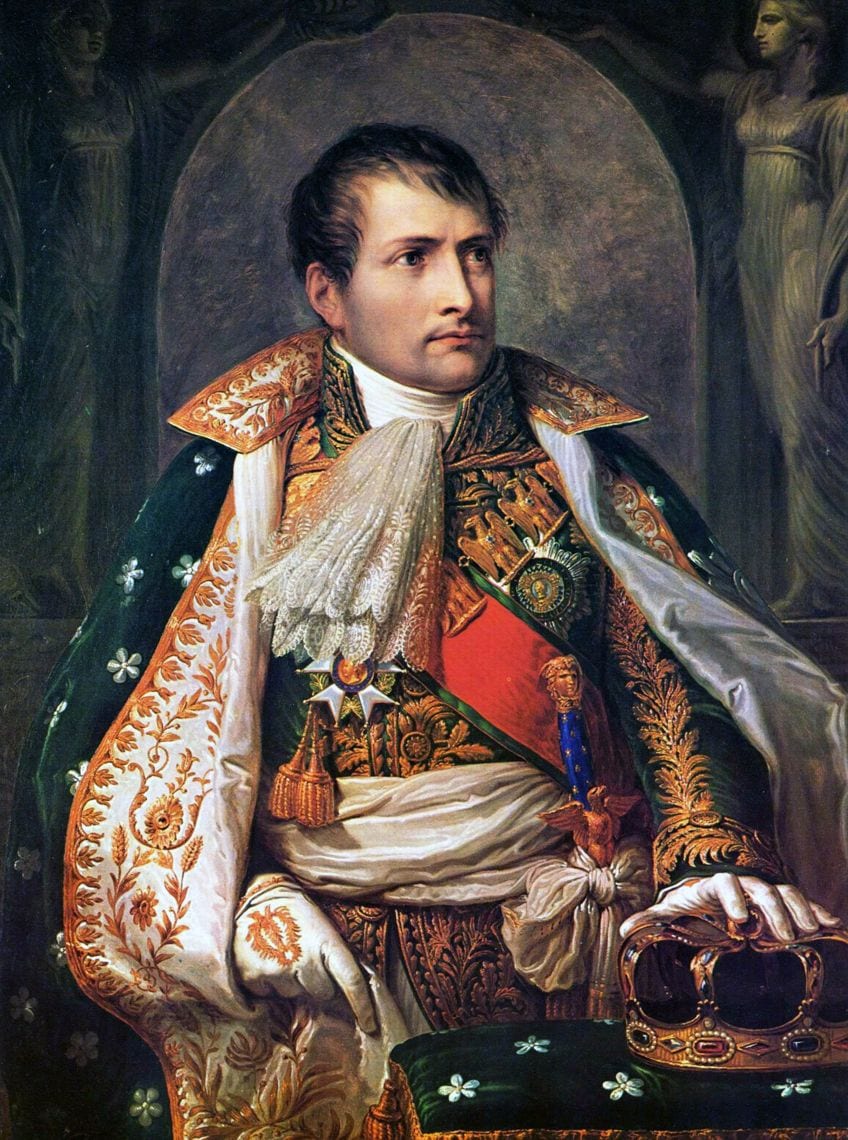 Portrait of Napoleon as King of Italy (1805) by Andrea Appiani; Andrea Appiani, Public domain, via Wikimedia Commons
Portrait of Napoleon as King of Italy (1805) by Andrea Appiani; Andrea Appiani, Public domain, via Wikimedia Commons
However, the occupation of the Pitti Palace was not as uninterrupted as the Medici’s. During the Napoleonic war, the leader had control over part of Italy and sought the palace out as a base of operations for the duration of his occupation. After this, the house of Lorain was reinstated as the sole occupants of the palace, but this too did not last for long.
Ownership by the State
Soon, the house of Loraine passed on ownership of the palace to the house of Savoy in the late 19th century. At this point, there was a large social movement in the region seeking to unify the different states of Italy and consolidate them under one regime. Eventually, this unification came to pass resulting in the event known as the Risorgimento, at which point Florence, and subsequently the Pitti Palace, became the capital city of Italy (for a time). This was the first time Italy had been united in a very long time, and since every nation needs a leader, Victor Emmanuel the second took up the mantle of King for a newly unified Italy.
The reign of the new king would last for nearly 20 years before his eventual death around 1878. Upon his death, the Pitti Palace would not be the home to another monarch, even up to the present day.
What is the Pitti Palace used for these days you ask? Well, in 1919, the Grandson of the late king (Victor Emmanuel the third) gifted the palace and all its contents to the people of Italy. The state then turned the property and the many treasures inside of it into a museum by dividing up the garden, and turning some 140 rooms on the property into display spaces.
The Royal Apartments of the Pitti Palace
As you could expect, if you’re living in a palace, you would need actual living quarters. The portion of the palace that was devoted to living quarters is known as the Royal apartments and is where the Medici and their successors would lay their heads down at night. These rooms have not been altered since the palace was handed over to its new occupants and eventually the state.
The Royal apartments comprise a total of 14 rooms that functioned as living quarters, bathing quarters, and a substantial living space as well. The rooms had pretty much any day-to-day amenities that the Medici’s would ever have needed, but funny enough they were still considered to be somewhat intimate despite their size.
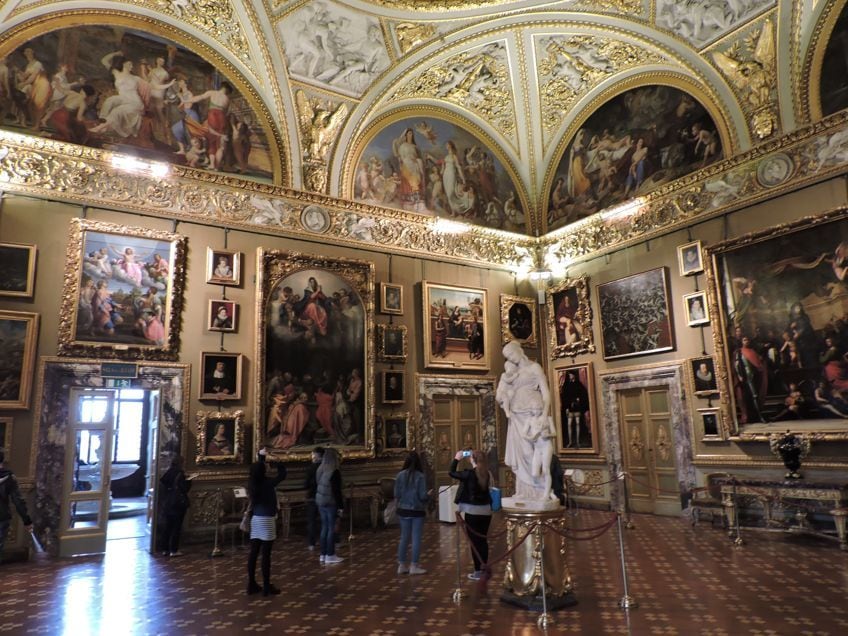 Galleria Palatina, Palazzo Pitti, Florence (1458); Dimitris Kamaras from Athens, Greece, CC BY 2.0, via Wikimedia Commons
Galleria Palatina, Palazzo Pitti, Florence (1458); Dimitris Kamaras from Athens, Greece, CC BY 2.0, via Wikimedia Commons
All of the rooms contain some variation of a Medici portrait, but they differ in style and composition compared to the pieces that are on display in the palace’s main gallery spaces. Other furnishings in the Royal apartments are unique compared to the rest of the palace and day beds, furnishings, and beds don’t necessarily correspond with the rest of the palace’s furnishings.
As we mentioned previously, the first king of a unified Italy made his home in the palace for quite some time before it would eventually be converted into a museum for public use. Before his official move out of the palace and its conversion into a museum, the King had a different residence and would periodically visit the palace, and a room would be permanently reserved for him and his family as a result. There are loads of accounts of many people of influence staying in some of these quarters as well as guest quarters over the course of the Medici’s reign.
These days the property is strictly a public museum and is not open for board or lodging, but it’s still incredible to think that at a certain point in time, it would have been possible to be invited to stay in such an opulent location.
The Palatine Gallery of the Pitti Palace
If you haven’t caught on by now, history and tradition mean a lot to the people of Italy in general, so it comes as no surprise that one of the biggest galleries of Renaissance art housed in the Pitti Palace would be named after the last Medici to occupy the house. That’s right, the famous Palatine gallery in Italy is named after none-other than Electress Palatine Medici!
This gallery is home to some of the most incredible artwork in modern history and is considered by many to contain some of the best examples of renaissance art on the face of the planet. Artists like Raphael, Correggio, and even Titian have their works displayed in this historic gallery, and in total the gallery comprises over 400 priceless works of art!
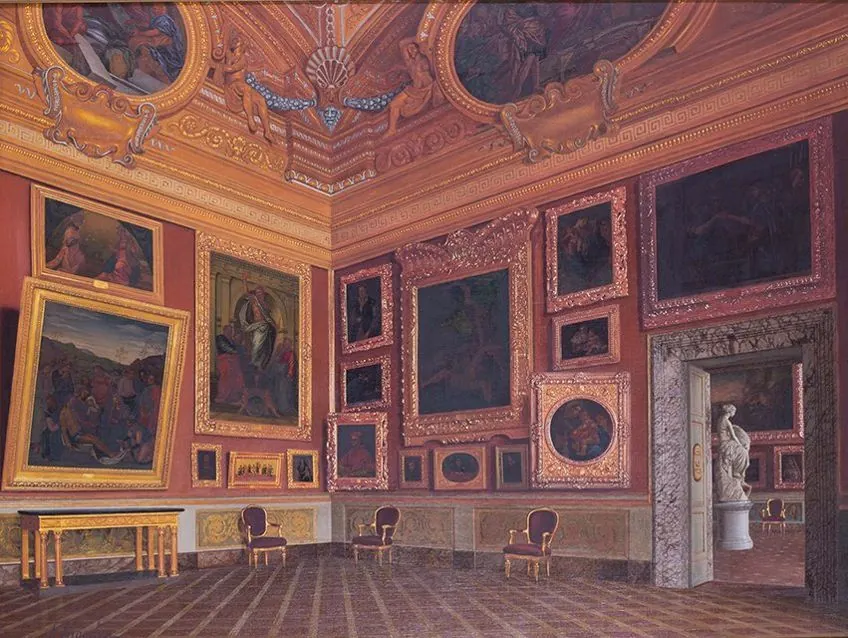 The Sala de Saturne in the Pitti Palace, Florence (1870) by Francesco Maestosi; Francesco Maestosi, Public domain, via Wikimedia Commons
The Sala de Saturne in the Pitti Palace, Florence (1870) by Francesco Maestosi; Francesco Maestosi, Public domain, via Wikimedia Commons
Those who have visited the gallery said that the space does not feel the same as other commercial galleries, instead maintaining the feel of a private collection in the hands of a wealthy few. This feeling is further enhanced by the fact that the paintings have been arranged freely, instead of by movement or chronological order. This gives the gallery somewhat of a relaxed feel to it and allows you to take in every piece at your own pace, instead of feeling like you’re in a sterile space with a time limit on your viewing pleasure.
This, and the fact that the collection has been spread out over the number of rooms (even flowing over into the royal apartment section) makes for an interesting experience overall.
The Many Frescoes of Pietro da Cortona
Before we get into the brilliant artwork of Cortana, we should probably explain what exactly a “fresco” is. Essentially, a fresco is a style of mural painting done by hand, a discipline that takes quite a bit of skill and practice mind you. Pietro da Cortona was tasked with furnishing only a small room with one of these designs, and when the state was so impressed with his work that he was asked to do a number of others upon its completion.
His initial fresco depicted the “Four Stages of Man”, which as we mentioned previously was extraordinarily well received. The theme of time and continuity continued as Cortana would go on to furnish the halls of the place with “The Age of Gold” and later “The Age of Silver” as well as the “Age of Bronze” and “The Age of Iron” in later years.
These are widely considered to be his best works by a number of curators and artists alike.
They were not his last though. Even though Cortana would later leave the city of Florence in later years, he did leave behind some of the most interesting and well-detailed stucco mural work ever made. He was tasked with decorating the ceilings of the grand ducal reception rooms, a series of five rooms reserved for high-end visitors when the palace was still a place of residence.
When Cortana then decorated the ceiling of each room with a deity of Ptolemaic origin, in order of power and succession. These included Venus, Apollo, Mars, Jupiter, and Saturn. The moon and the god Mercury are notably not present in the display of the pantheon, and whether this was a mistake, or an intentional omission is unknown.
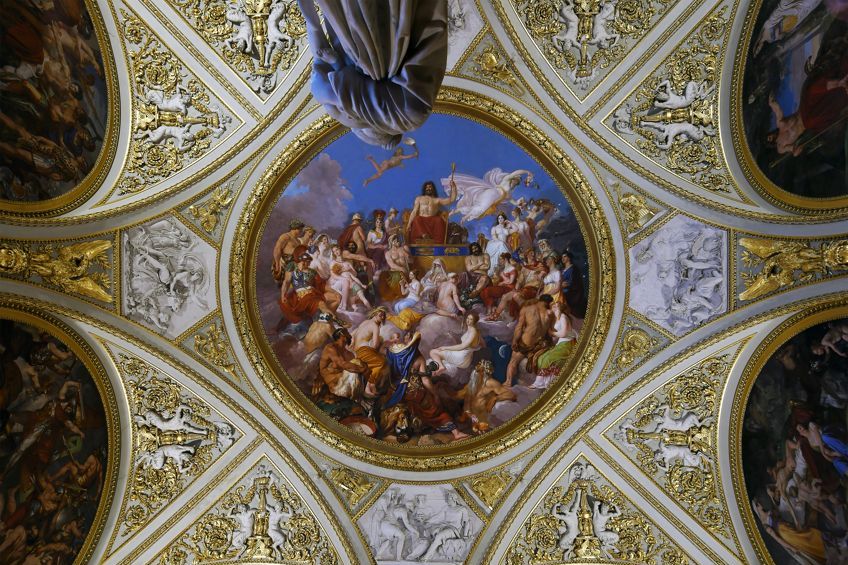 Palazzo Pitti (Florence) – Ceiling of the Room of the Iliad (1458); Orlando Paride, CC BY-SA 4.0, via Wikimedia Commons
Palazzo Pitti (Florence) – Ceiling of the Room of the Iliad (1458); Orlando Paride, CC BY-SA 4.0, via Wikimedia Commons
The purpose of these murals is believed to have been to celebrate the status of the Medici family and the “virtue of leadership” the bloodline demonstrated during their rule. Even though Cortana took leave from the city of Florence before his work could be completed, his successor and protégé Circo Ferri managed to complete the set of murals in his absence.
These ceiling murals, like many other ceiling works that were popular during the renaissance era, were extremely popular at the time. Many of them have clearly taken inspiration from works like the Sistine Chapel and the drunkenness of Noah, but have managed to put their own unique subject matter, style, and visual impact behind their pieces (this one included).
Now that you know what the Pitti Palace is, how it came about, who its original owner was, who lived there the longest, how it became as big as it is, where to find it, and what it is used for today, it’s time for you to get out there and put your newfound knowledge to the test! The Florence Palaces are some of the most beautiful architectural symbols out there, so why not pay them a visit if you ever find yourself in Italy?
Frequently Asked Questions
Which Is the Biggest of the Florence Palaces?
There are many palaces for you to see in Florence, but by far the biggest and most historically interesting is the Pitti Palace. Owned by the Medici family for most of its existence, this palace is by far the largest and most intricately constructed palace on the face of the earth.
What Style Is the Pitti Palace Architecture?
As it is so stunning to look at, many people ask about the Pitti Palace’s architecture and design. There is no simple answer to this question, but the primary structure was constructed primarily in the Renaissance fashion, with additions to it having a Roman influence and even minimalistic elements.
Is the Pitti Palace Worth a Visit?
This depends on what you’re looking to get out of your experience overall. The Pitti Palace is a vast and architecturally diverse structure that has been used by multiple parties for generations, and while you might think it would be difficult to appreciate, the sheer size of the structure and the amazing artwork contained within it is sure to knock you off your feet!

I am deeply passionate about history and am constantly fascinated by the rich and complex stories of the past. As the editor-in-chief of learning-history.com, I have the opportunity to share this passion with a wide audience through the creation and distribution of engaging and informative content about historical events, persons, and cultures. Whether it’s through writing articles and blog posts or creating videos or podcasts, I strive to bring the past to life in a way that is both accurate and enjoyable. My expertise in history, combined with my strong writing and communication skills, allows me to effectively communicate complex historical concepts and make them accessible and interesting to a wide range of readers. I am truly grateful for the opportunity to share my love of history with others through my work on learning-history.com.

